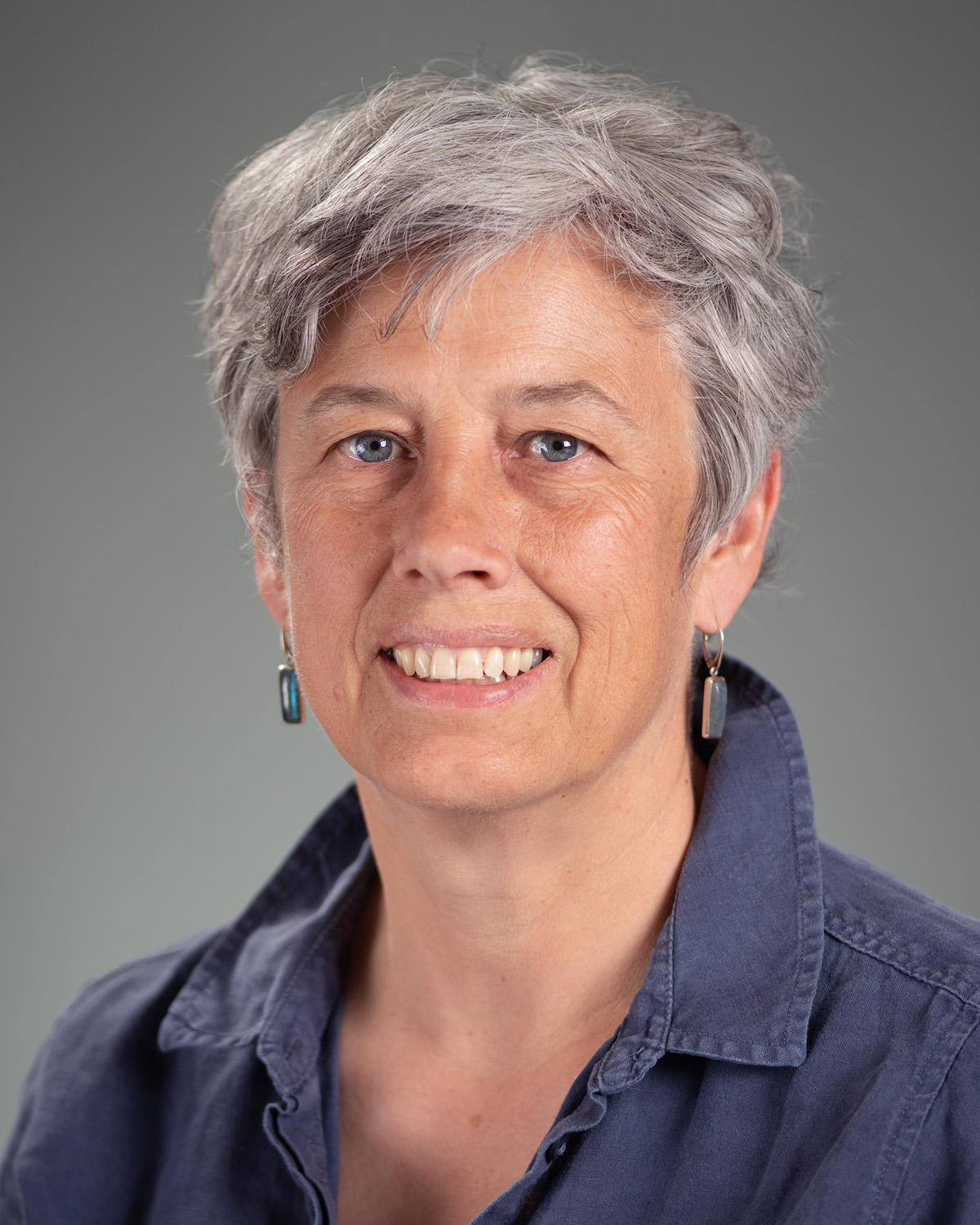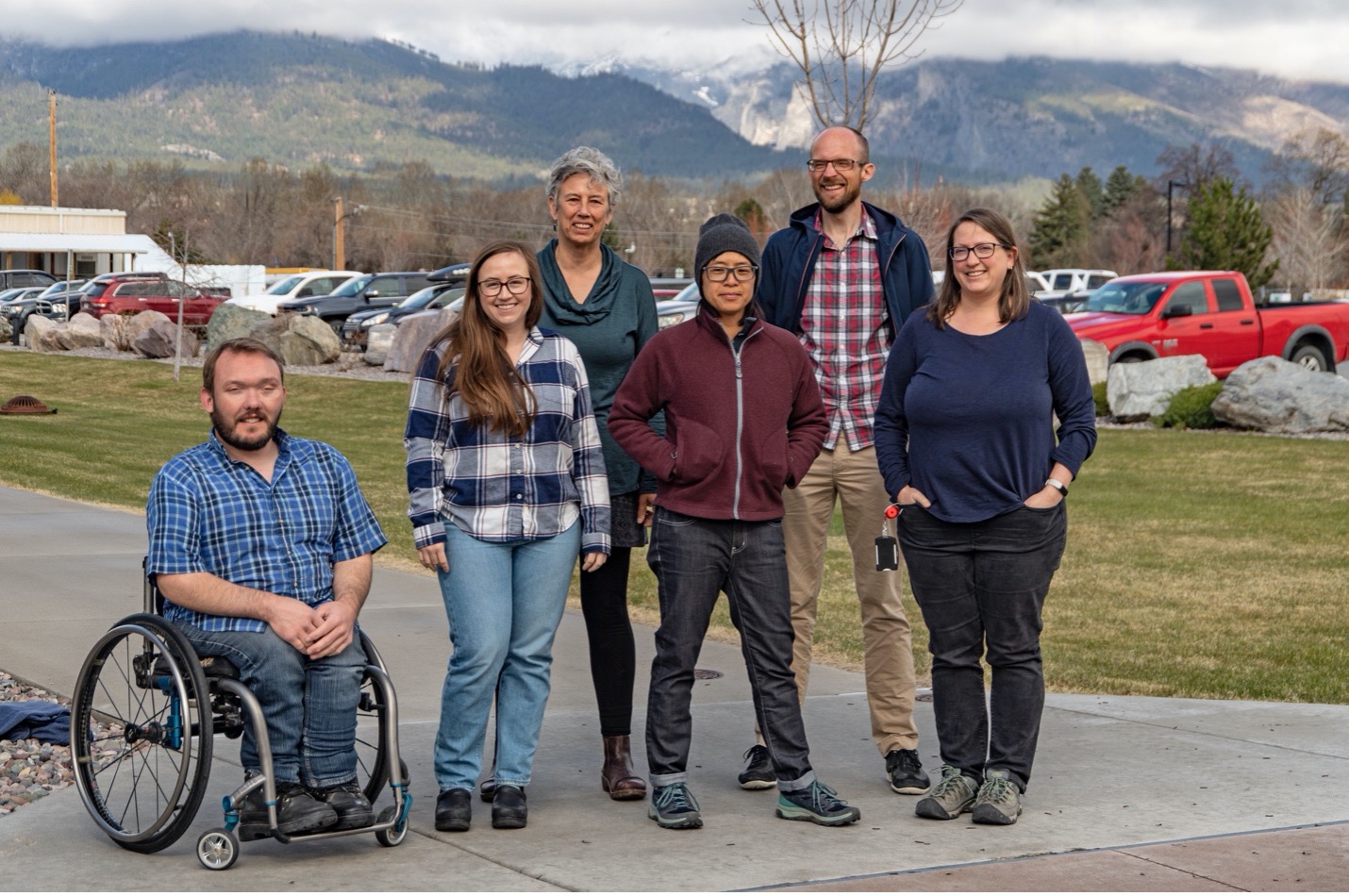Salmonella-Host Cell Interactions Section
Established in 2001
Olivia Steele-Mortimer, Ph.D.
Deputy Chief, Laboratory of Bacteriology
Chief, Salmonella-Host Cell Interactions Section

Major Areas of Research
- Interaction of Salmonella Typhimurium with epithelial cells
- Salmonella Typhimurium and the blood brain barrier
- Developing attenuated S. Typhimurium for cancer treatment
Program Description
Salmonella enterica are motile Gram-negative bacteria adapted to live in the intestinal tract. Our understanding of how Salmonella interact with their hosts is largely based on studies on the model organism S. enterica serovar Typhimurium (S. Typhimurium) is), a common cause of gastroenteritis in humans. Our group studies how S. Typhimurium interacts with mammalian cells. This that can cause severe systemic disease in people with certain immune deficiencies. Salmonella are facultative intracellular pathogen uses two type-three secretion systems (T3SS) to deliverpathogens, whose ability to survive and replicate within host cells is essaential for pathogenesis. Like many other bacterial pathogens, Salmonella inject a cohort of bacterial effector proteins into the host cell.eukaryotic cells, where they target a variety of pathways. Two distinct Type III Secretion Systems, T3SS1 and T3SS2, facilitate entry into non phagocytic cells, such as intestinal epithelial cells, and establish a replicative niche within both phagocytic and nonphagocytic cells. T3SS1 mediates invasion of nonphagocytic cells and early post-invasion events. In contrast, by targeting the actin cytoskeleton. Following internalization into epithelial cells, the bacteria either remain within a membrane bound vacuole, the Salmonella-Containing Vacuole (SCV), or escape into the cytosol. Replication occurs in both intracellular niches, although at different rates and with either T3SS1 or T3SS2. In bacteria that remain within the SCV, T3SS2 is induced following invasion and is required for survival and replication within the Salmonella-containing vacuole (SCV).. In contrast, bacteria within the cytosol continue to express and utilize T3SS1 and do not express T3SS2. Our current research is based on our extensive experience of studying how S. Typhimurium interacts with cultured epithelial cells.

Scanning electron micrographs showing S. Typhimurium invading human intestinal epithelial cells (C2Bbe1).
In vitro models
T3SS1 is also known as the invasion-associated T3SS because it is essential for efficient invasion of non-phagocytic cells. Multiple T3SS1 effector proteins target the actin cytoskeleton, directly or indirectly, to induce localized membrane ruffles on the cell surface. However, T3SS1 effectors are also important for early SCV biogenesis and other post-invasion processes. We are studying the role of the inositol phosphataseparticularly interested in SopB, a T3SS1 effector that participates in invasion and early biogenesis of the SCV. In epithelial cells, SopB also and stimulates phosphorylation and activation of the pro-survival kinase Akt/PKB via an indirect process that is not well understood. Akt activation contributes to cellular growth, survival and other processes and disruptions of Akt-regulated pathways are implicated in many cancers and other diseases. We are investigating the consequences of Akt activation in the context of Salmonella invasion, as this important kinase has many substrates and affects several essential cellular processesepithelial cells infected with S. Typhimurium.
Biogenesis of the SCV
In epithelial cells, Salmonella can replicate within the membrane bound SCV or within the cytosol. Biogenesis of the SCV involves early interactions with the endocytic pathway followed by delivery of lysosomal membrane proteins and is dependent on both T3SS. We have used live cell imaging techniques to reveal the dynamic interactions that occur between the SCV and endosomes and lysosomes. More recently, we have used this same approach to investigate the bimodal lifestyle of intracellular Salmonella. These studies have shown that replication in the cytosol occurs more rapidly than in the SCV, at least in epithelial cells.
Colonization and Persistence in the mammalian GI tract
Salmonella are intestinal tract specialists. We are using murine and bovine models to study how interactions between S. Typhimurium and intestinal epithelial cells contribute to colonization, persistence, and shedding.
Bacterial Meningitis
Gram negative bacillary meningitis is often fatal and long-term neurological sequelae are common in survivors. S. Typhimurium is not normally associated with meningitis in high-income countries but in sub-Saharan Africa, where it is highly associated with HIV-infection in adults, it is often invasive and consequently is a significant cause of bacterial meningitis. We are studying how, in susceptible strains of laboratory mice, systemic infection with S. Typhimurium leads to meningitis.
Developing attenuated S. Typhimurium for cancer treatment
Several anaerobic and facultative anaerobic bacteria have been shown to preferentially accumulate in tumors, and S. Typhimurium can inhibit or regress tumors in mice. We are genetically engineering S. Typhimurium to deliver therapeutic molecules directly to tumor cells, or into the tumor microenvironment.
Biography
Education
Ph.D., 1994, European Molecular Biology Laboratory
Dr. Steele-Mortimer received her Ph.D. in cell biology from the European Molecular Biology Laboratory in 1994. From 1995 to 1999, she did postdoctoral research on Salmonella-host cell interactions in the laboratory of B. Brett Finlay at the University of British Columbia in Vancouver, followed by one year at Washington University, St. Louis, with Phillip D. Stahl. She came to the National Institutes of Health in 2001 and became a tenured Senior Investigator in 2007.
Selected Publications
Cooper KG, Chong A, Kari L, Jeffrey B, Starr T, Martens C, McClurg M, Posada VR, Laughlin RC, Whitfield-Cargile C, Garry Adams L, Bryan LK, Little SV, Krath M, Lawhon SD, Steele-Mortimer O. Regulatory protein HilD stimulates Salmonella Typhimurium invasiveness by promoting smooth swimming via the methyl-accepting chemotaxis protein McpC. Nat Commun. 2021 Jan 13;12(1):348.
Chong A, Cooper KG, Kari L, Nilsson OR, Hillman C, Fleming BA, Wang Q, Nair V, Steele-Mortimer O. Cytosolic replication in epithelial cells fuels intestinal expansion and chronic fecal shedding of Salmonella Typhimurium. Cell Host Microbe. 2021 Jul 14;29(7):1177-1185.e6.
Chong A, Starr T, Finn CE, Steele-Mortimer O. A role for the Salmonella Type III Secretion System 1 in bacterial adaptation to the cytosol of epithelial cells. Mol Microbiol. 2019 Oct;112(4):1270-1283.
Nilsson OR, Kari L, Steele-Mortimer O. Foodborne infection of mice with Salmonella Typhimurium. PLoS One. 2019 Aug 8;14(8):e0215190.
Lathrop SK, Cooper KG, Binder KA, Starr T, Mampilli V, Detweiler CS, Steele-Mortimer O. Salmonella Typhimurium Infection of Human Monocyte-Derived Macrophages. Curr Protoc Microbiol. 2018 Aug;50(1):e56.
Finn CE, Chong A, Cooper KG, Starr T, Steele-Mortimer O. A second wave of Salmonella T3SS1 activity prolongs the lifespan of infected epithelial cells. PLoS Pathog. 2017 Apr 20;13(4):e1006354.
Employment Information
If you are interested in joining our team please contact Dr Steele-Mortimer.
Research Group
We study how Salmonella Typhimurium interacts with mammalian host cells and the roles these interactions play in pathogenesis.


